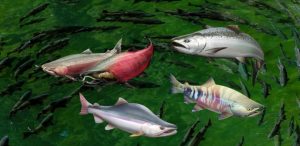The heat wave is melting snow in the Sierra, which is bringing freezing cold water into the valley’s lakes, streams and rivers.
The effects of the snowmelt can also be deadly and proved so on Tuesday.
“With this fast moving water it does not take long for someone to get in trouble,” said State Parks Ranger Scott Liske.
Liske says a group of friends from Sacramento was swimming in the main channel of the North Fork when one of them drowned.
“He went downstream, and his friends ran after him, telling him to grab o to something. He did go under the surface and did not come back up,” Liske said.
Liske couldn’t identify the victim but says he was 20-years old. The heavy flows are also a concern at the Yuba River in Nevada County.
The heavy flows are also a concern at the Yuba River in Nevada County.
“One of the things we are concerned about is not just the issues in the upper elevations; as the snow starts to melt it finds its way down to the lower elevations,” said Nevada County Spokesman Joshua Pack.
Pack says he often sees people jumping into the river like it’s a swimming pool.
“It was over 100 degrees yesterday, definitely not hanging out at my place,” said Brian, who came to swim in the river to cool off.
He says he knows what to look out for, so he doesn’t end up under water.
“Keeping close to the edge, definitely not going into the white part, try not to be swept away too quickly,” Brian added.
More at CBSLocal.com >>>

